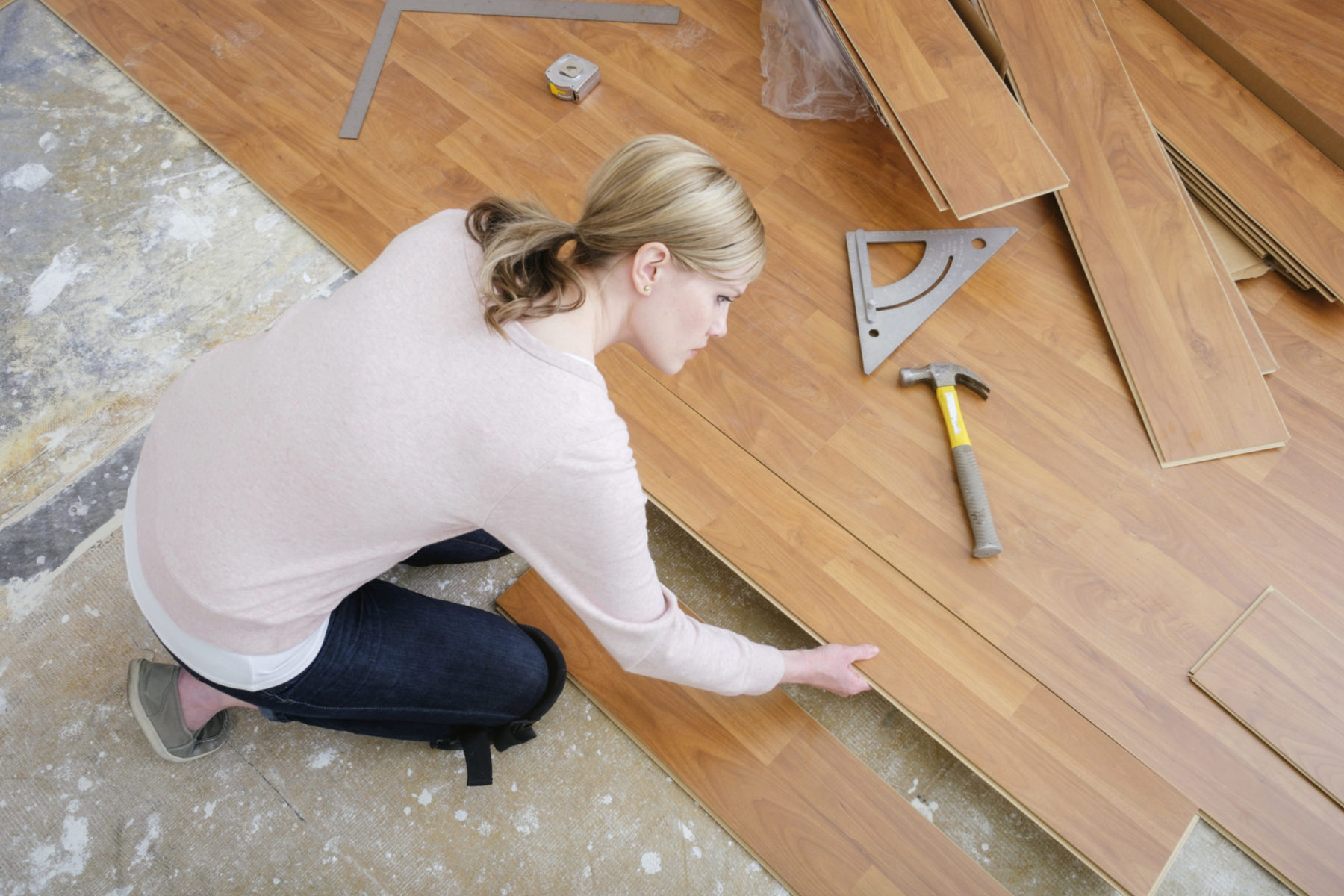Engineered hardwood flooring can be best described as an alternative to solid hardwood flooring with many of its benefits. Most of you are probably familiar with solid hardwood flooring, which is just solid wood throughout its thickness and is usually made of maple, walnut or oak. Engineered hardwood flooring looks similar to solid hardwood from the surface, but it is made by bonding a thin layer of hardwood over plywood. While solid plywood can be sanded over many times, engineered hardwood can only be refinished only once.
How To Select Engineered Hardwood Flooring
This type of flooring, as earlier mentioned, looks similar to solid hardwood but is made by bonding a layer of hardwood over plywood. Typically, an engineered hardwood flooring lasts around 30 years, and the benefit of this is that it is less expensive and easier to install.
On average, engineered hardwood is known to have a lifespan of between 20 to 40 years. The average cost per square foot depends on the quality and can vary between $3 to $14. While this type of engineered hardwood is cheaper than solid hardwood, the disadvantage is that it can only be usually sanded and refinished once or twice. The other advantage of this flooring type is that it has good resistance to warping, which is better for stability.
Engineered hardwood plans vary in thickness between 3/8″ to 9/16″. The average width of the plank ranges from 2.25″ to 7″. Similarly, the plank length can be anywhere from 12″ to 60″. The installation of engineered hardwood is similar to solid hardwood and can be nailed down or glued-down.
Engineered Hardwood Flooring Appearance
Most kinds of engineered hardwood flooring come prefinished from the factory and do not have as many colour options and types as solid hardwood. Typically, the floorboards are wider and have sloped edges creating grooves between the boards. On the other hand, solid hardwood has a tighter fit between boards.
Engineered Hardwood Flooring Durability and Lifespan
Since it is made by bonding a layer of hardwood over plywood, this flooring type may not be as durable as solid hardwood. Moreover, engineered hardwood can only be sanded or refinished once or twice before the top layer wears down. However, prefinished hardwood flooring from the factory is relatively durable as they have a hard coating that ages well. Proper maintenance by applying varnish every couple of years is required.
Engineered hardwood typically lasts between 20 to 30 years, whereas solid hardwood can last anywhere from 30 to 100. This is because solid hardwood can be sanded down and refinished multiple times, adding to its lifespan.
Engineered Hardwood Flooring Installation
The typical way of installing engineered hardwood flooring is by nailing it down. However, some hardwood types have a locking mechanism in place that lets you install it as a floating floor. The other installation method involves glueing it on a concrete subfloor. In comparison to solid hardwood, the installation of engineered hardwood is easier.
Engineered Hardwood Flooring Maintenance
Cleaning the engineered hardwood flooring can be done similarly to other types of hardwood flooring. You may dust, vacuum, sweep and occasionally mop with a damp cleaner. It is advised to avoid cleaning with water directly on hardwood flooring.
Engineered Hardwood Flooring Resistance
If you live in a humid location, it is advised not to install hardwood flooring – whether solid or engineered. Engineered hardwood performs slightly better in humid areas since the plywood within it is more stable with less warping. Moreover, this type of flooring has good heat resistance.
The Average Cost of Engineered Hardwood
Since engineered hardwood is not entirely made of solid hardwood, it is usually cheaper. Typically, they range from $3 to $10 per square foot, with most types falling in the $5 to $7 per square foot range. While the difference in cost between solid hardwood and engineered hardwood may not be extreme, installation charges add another $4 to $10 per square foot, depending on the work’s complexity.
Differences between Engineered Hardwood Flooring and Laminate Flooring?
Laminate flooring has a very similar appearance to engineered flooring. While engineered flooring has a top layer of solid wood, laminate uses a photographic layer. You can also get laminate to look like other materials such as stone or metal. Since you can manufacture laminate to look like real solid wood, it is a popular, cost-effective alternative. Moreover, laminate is durable, scratch-resistant and has low maintenance.
While laminate flooring has certain advantages, such as durability, scratch and water-resistant, low-maintenance, and cost-effectiveness, it has a few disadvantages.
Disadvantages of Laminate Flooring
- The first being that it is not real wood: While it does mimic the appearance of solid wood, it will not have the same quality, texture and feel.
- The second disadvantage of solid wood is that it is not completely waterproof. Despite the flooring having some water resistance, it cannot withstand standing pools of water.
- As a consequence of laminate not being waterproof, it cannot be used as a flooring material in bathrooms or basements, as they are prone to leaks.
- The other disadvantage of hardwood flooring is something you may have come across. If the laminate is installed poorly, walking on it can produce a hollow sound.
Author’s Bio
Karthik Talwar is a content writer for BreezeMaxWeb that helps businesses showcase their brand through enticing copy. When he is not working, he enjoys exploring new places and trying new foods.

